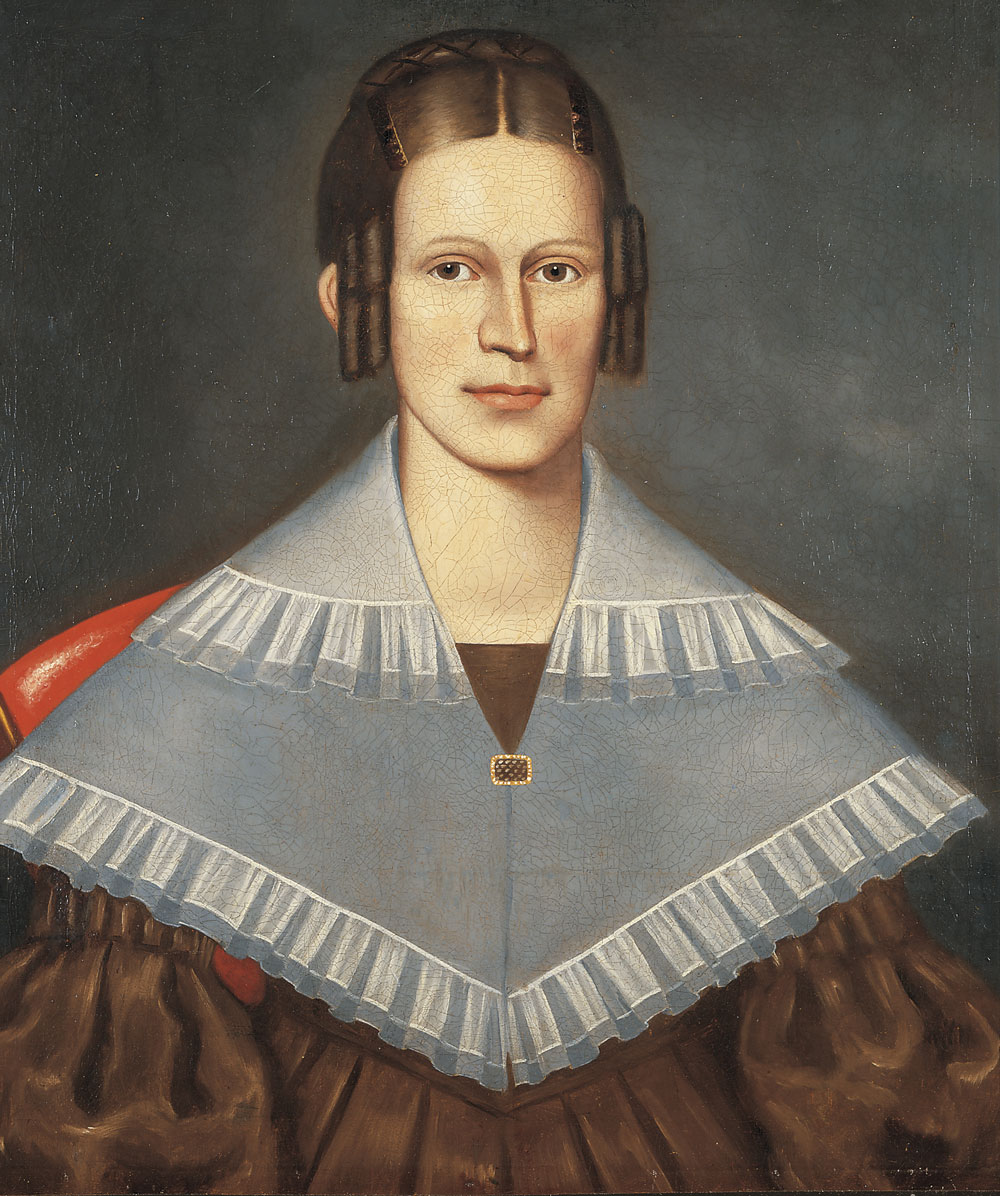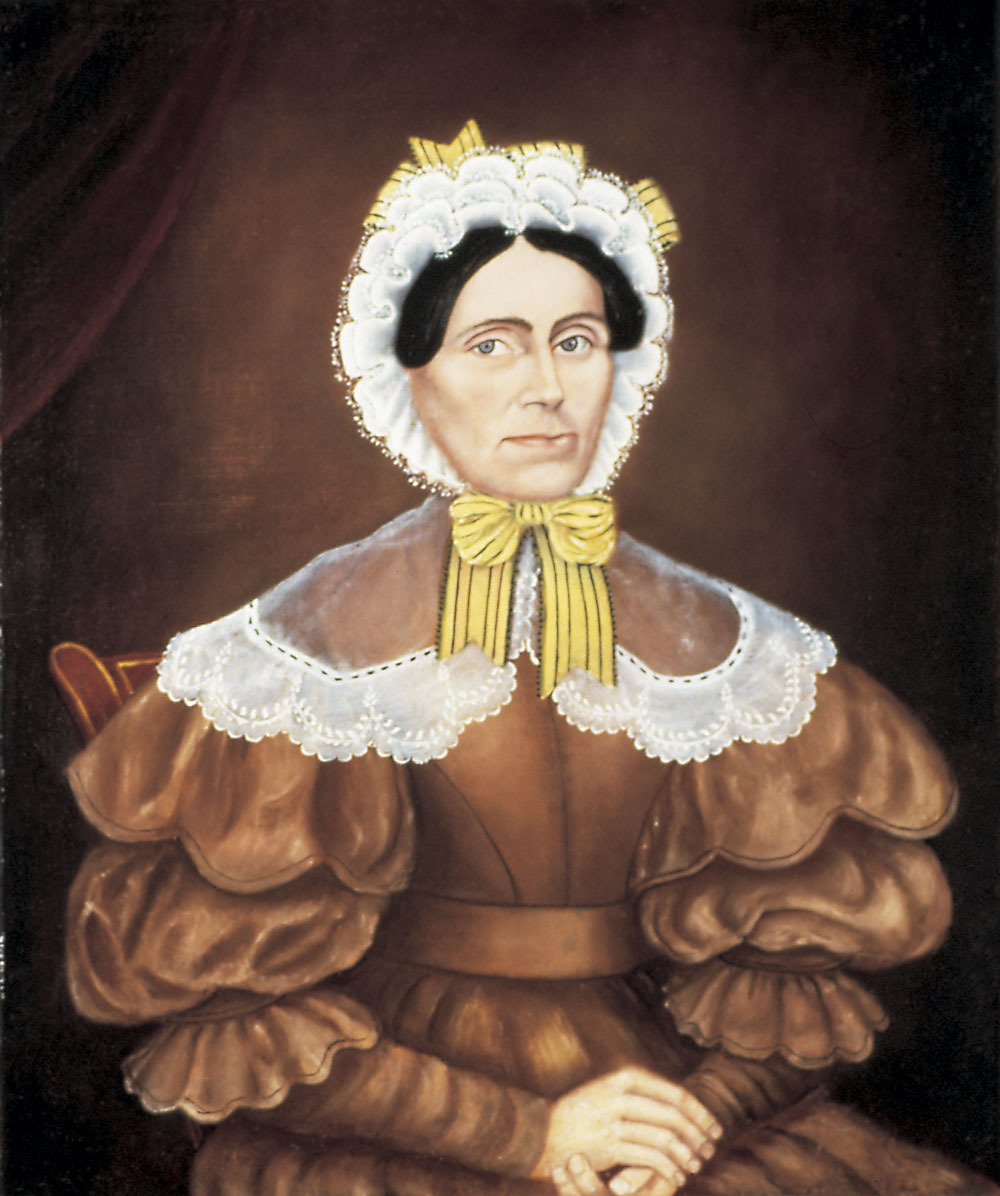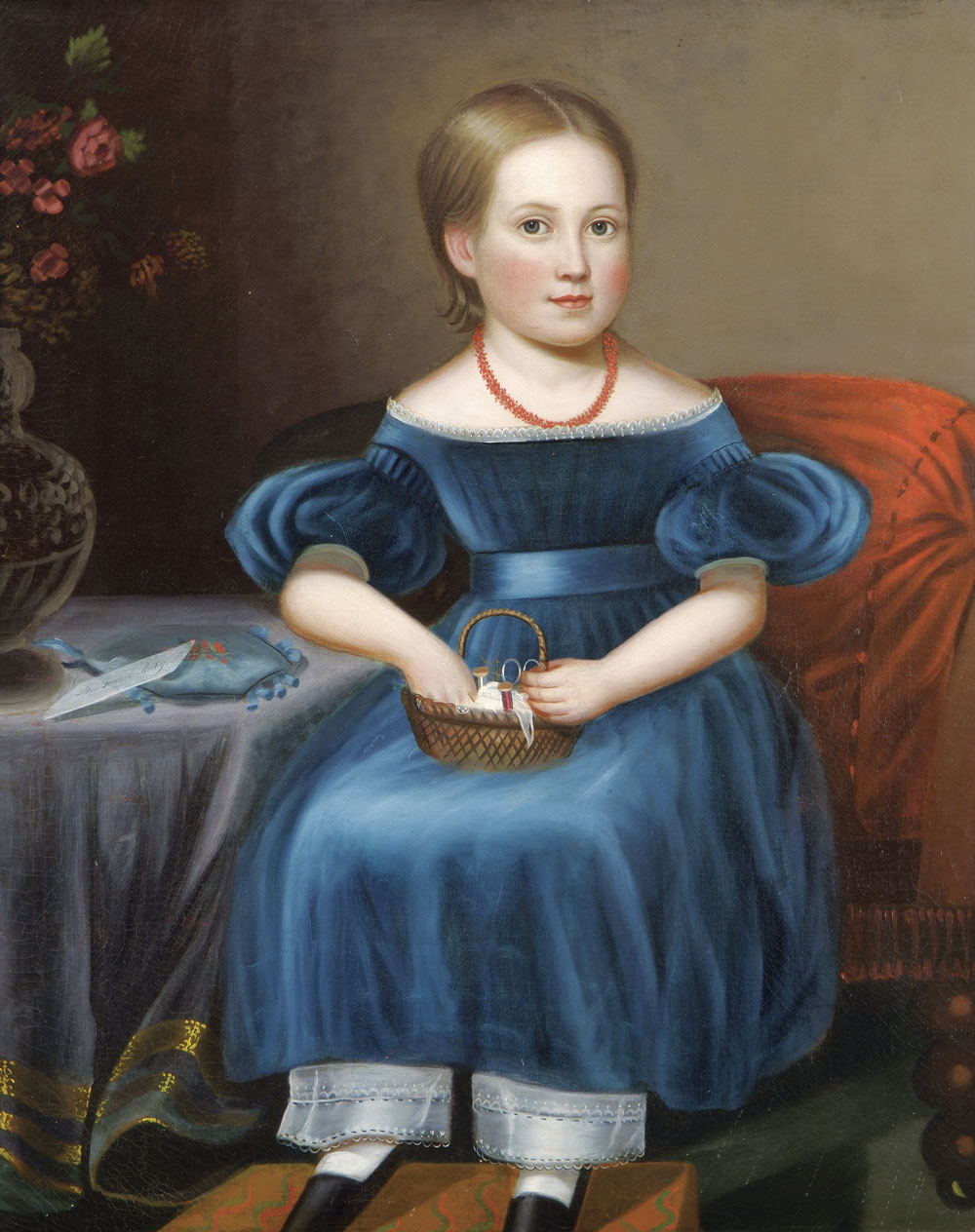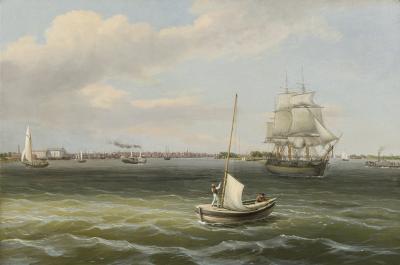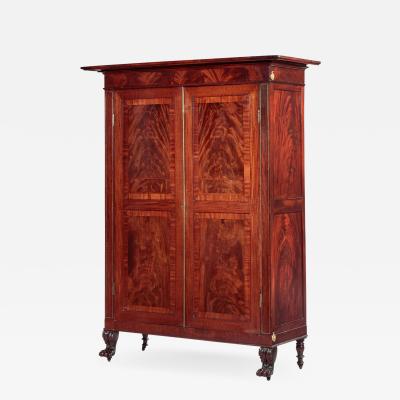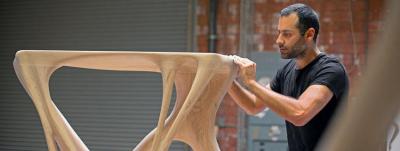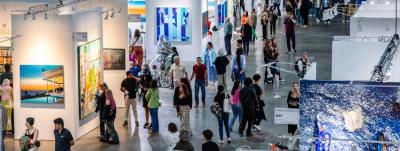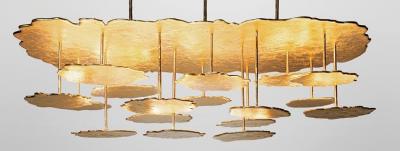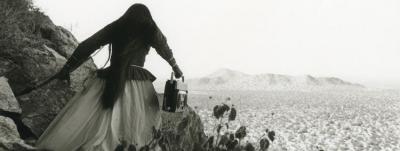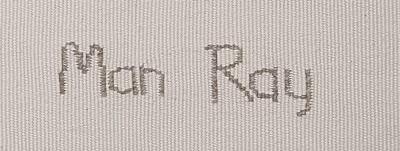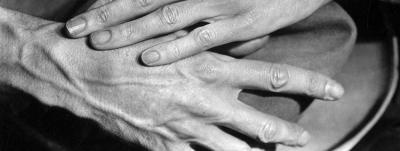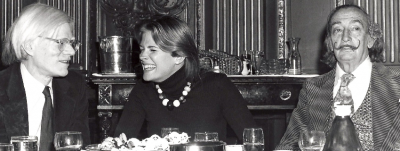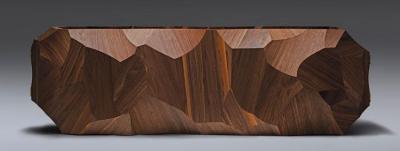An Appreciation Of Nineteenth-Century Folk Portraits
Many so-called “primitive” portraits of the first half of the nineteenth century are extraordinarily captivating in their abstract, imaginative, and seemingly humble execution. Their beauty and charm lie in the manner in which the artists used colors and perspective. While the most prized primitive portraits show degrees of ingenuity and a divorce from reality that appeal to today’s aesthetics, there was an appreciation for the images many years prior. Early-twentieth-century artists Robert Laurent, William Zorach, Elie Nadelman, and Charles Sheeler recognized the abstract qualities of American “primitives” and not only collected them, but drew inspiration from them.1
The often asked question, “But is it a good likeness?” doesn’t apply exclusively to folk portraits. In modern portraiture the likeness often bears little resemblance to the actual sitter, though we still see the result as an appealing work of art. The same can be said for primitive folk portraits. More important than attaining a likeness was the fact that the artist probably achieved his goal of painting an image that pleased the sitter and his or her family.
Primitive portraits were generally painted by itinerant artists who worked for food and lodging or who rented their facilities, staying in an area until all interested subjects had been painted before moving on. They occasionally advertised their services in newspapers, offering additional skills such as fancy, sign, and coach painting to broaden their potential for income. Some artists charged different rates depending on how much a sitter was willing to spend, which was reflected in whether the finished product had more or less realism and modeling. Some itinerant artists painted at a rate of two or three portraits per day, providing little opportunity to correct errors or attempt significant over-painting. Most of these artists did not sign their names. When they did, it was usually on the back of the canvas, with information about the sitter, location, or date. As a result, most attributions are based on rare signed examples, documents, or family histories.
Portraits by academically trained artists of this era are generally quite realistic: facial features are modeled with subtle shading, highlights, and coloring; the body is anatomically correct, with a natural pose; the perspective is accurate; and fabrics are identifiable, and backgrounds, furnishings, and accoutrements are attentively detailed. Two Girls (Fig. 1), by Jacob Eicholtz (1776–1842), is an example of a fine “academic” portrait.2 This early nineteenth-century artist worked in Lancaster County, Pennsylvania, and studied briefly early in his career with Gilbert Stuart in Boston.
In contrast, primitive portraits usually show a linear format with flat facial features; a pose, frequently stiff, that is turned three-quarters or is fully frontal; minimal shadowing to indicate the direction of light; simplified versions of hands, ears, hair, and disproportionately sized heads; arms and legs extended from bodies in distorted directions; sometimes greater attention paid to details of clothing and backgrounds as compared to the face; backgrounds may be either plain and free of objects and scenery or, conversely, a fanciful rendition. Though artists had varying skills, with some having modest academic training, most primitive folk portraits exhibit some or all of the above characteristics.
Erastus Salisbury Field (1805–1900), a portrait painter from Leverett and Sunderland, Massachusetts, produced dozens of portraits that showed beautiful effects through subtle color changes, the rendering of gently sloping shoulders, and clothing that was balanced with the overall scheme of the painting. As a youngster he showed a natural talent for sketching family members, and at age nineteen briefly learned the rudiments of painting from Samuel F. B. Morse, a co-founder of the National Academy of Design in New York City in 1825, and later, inventor of the telegraph.3 The portrait of his sister-in-law Thankful Field (Fig. 2), painted in 1835, is an example of the artist at his best. Starting at the bottom, a pyramid is formed by a purplish-brown dress with diffuse blackish brush strokes, a simple gray pattern of lace, a graceful neck, and a well depicted face. The hairpins and the part in her hair subtly direct attention to the face. These elements, along with the ruffles in her shawl, create a vertical linearity. Presenting the figure against a dark gray background enhances the effectiveness of a design in which the artist daringly uses four shades of gray for over fifty percent of the canvas. For a splash of color, Field “caught a little red” (to use a modern artistic colloquialism that denotes the addition of an eye-catching bit of color) with the chair behind the right shoulder and beneath the right arm. While the subject’s face is depicted mostly head on, her nose points to the right, which reflects the naiveté of the artist’s rendering of physical features.
Primitive portrait painters occasionally used the same props in their images, “dressing” the sitters in the same outfits and reusing pieces of jewelry. In 1840, David Waite Bowdoin (ca. 1819–ca. 1872), an obscure portraitist (only two paintings are known) from New Braintree, Massachusetts, painted a beautiful portrait of his mother (Fig. 3).4 Because so few of his images have been found, it is unknown whether her outfit was a stock prop or if it belonged to her. Bowdoin may have assisted in its selection because he knew it would translate well in the image. He produced a beautiful design, with the bottom of the dress flowing outward and then moving into a pyramid, enhanced by the detailed white lace on the shoulders and around the head, which frames a finely portrayed face. He used yellow ribbons as a color accent. Even so, the abnormal depiction of the hands and lower arms, the stylized hair, and the “flat” rendering of his subject, categorizes this image as a primitive portrait.
An unsigned portrait of a young girl, her face partly in profile, is a symphony of blue and green (Fig. 4). The unknown artist used different shades of these two colors for the majority of the painting, creating a design in which the girl’s simply portrayed head stands out in a striking manner. Attention is drawn to the head, ribbon necklace, and to the small hand with a spot of varied color from a red flower. The painting is disarmingly simple, yet the use of very few colors is unusual and daring.
As figure 4 illustrates, many primitive artists didn’t focus on extraneous details, either because they felt they were not necessary or were not trained to recreate them. But some artists paid close attention to their sitters’ personal idiosyncrasies and to the background and fixtures. Among them were John Blunt (1798–1835), who worked in New Hampshire and Massachusetts, and Zedekiah Belknap (1781–1858), who painted portraits in Vermont, New Hampshire, Massachusetts, and New York. A distinguishing feature of Blunt’s work was the richness of his colors (Fig. 5);5 and Belknap’s was his stroke design and the manner in which he positioned his subjects (Fig. 6).6 In the portrait shown in figure 6, employing virtually only the color white, Belknap used brush strokes to show the roundness of the puffed sleeve and to make the sitter’s skirt appear to flow downward to a point at the lower right.
In 1980, Tom Armstrong, former director of the Whitney Museum, noted that early “folk artists display much greater creativity and artistic ability than they have previously been credited.”7 He was summarizing the change in appreciation and recognition of folk paintings that started in the mid-twentieth century among art historians, collectors, and dealers; works that had been admired decades earlier by modern artists. While many folk portraits are relatively crude, having been described as “ancestor paintings” until the 1960s and ’70s, most of the primitive artists of the first half of the nineteenth century clearly had a desire to improve their abilities, which was often reflected in their changing styles. Works by Ammi Phillips (1788–1865), Sheldon Peck (1797–1868), and Zedekiah Belknap show how they refined their work over time, simplifying the images and changing their color palettes.8 Joseph Whiting Stock’s (1815–1855) journal describes his experiences in learning how to use the medium of oil paint and produce likenesses.9 Injured and made a paraplegic at the age of eleven, he showed early talent for whittling and making toys. He tried painting portraits, and, with practice and the help of a nearby trained artist, produced a good likeness of his sisters. His friends began to commission portraits (“executed with various degrees of success”) and his reputation spread.
Some of the most well known primitive portraits were executed by members of what has become known as the Prior-Hamblen School, which consisted of William Matthew Prior (1806–1873), Sturtevant Hamblen (active 1837–1856), George Hartwell (1815–1901), and others who painted in a similar manner. Prior worked primarily in Maine, New Hampshire, and Massachusetts (particularly Boston). He developed variations in his style to suit his sitters’ abilities to pay, offering portraits that ranged from quickly produced flat images with little shading to more academic portraits with modeling and depth of style. It was the former that was largely emulated by artists in the Prior-Hamblin School and that many collectors consider desirable for their naive charm.
Baby in Blue (Fig. 7) is unsigned but attributed to William Mathew Prior; the stubby fingers and the nature of the brush strokes are characteristic of his work.10 This painting has the “extras” prized by today’s collectors, including the doll (which he daringly cut off at the painting’s edge) and the mountain scenery visible through the window. The curves and arcs, evident in the hair, shoulders, and skirt, add a visual depth. The bottom edge of the doll forms a continuation of the curve of the bottom of the baby’s skirt, while the doll’s top continues the line to the right side of the skirt, all providing a pleasing “flow.” The long brush strokes demonstrate that Prior’s technique included using his whole arm to complete his strokes, a method admired by modern artists.
Based on signed and attributed examples, Prior was prolific. Unsigned portraits not assigned to Prior but that show Prior-like similarities, are attributed to the various members of the school, depending on the characteristics. A painting of a little girl in blue (Fig. 8) shows a clever, orderly arrangement of angles and arcs. The pointed hand with long fingers outlined in a dark tone, often found in paintings by Sturtevant Hamblen, indicates an attribution to him. Hamblen was Prior’s brother-in-law and may have been his pupil. The number of his signed works is much less than that of Prior’s.11
There is a balance in the design of figure 8, with its invisible downward centerline through the part in the hair, nose, and the folds of the bodice, one side being the obverse of the other. The ears, the chair and the waist all aim upward and outward at the same angle. The skirt arcs upward, the bodice arcs downward, and the shoulders arc and slide pleasingly into the bodice. Using this treatment, attention is pulled to two centers of interest: the head, for which the bare shoulders and neck create a graceful pedestal, and the apple. Nearly invisible in the painting is the light-colored hair coming down below the ears, possibly deliberately so, to keep it from detracting from the design. The balance of the right and left sides of the figure, along with the stiff tapered hand and overall stiffness of the subject, are frequent Hamblen characteristics that further enable us to attribute unsigned paintings to this artist. Hamblen used built-up dabs of white paint (impasto) for edges of the neckline and sleeves to give a sense of realism, possibly a technique he learned from “schooled” artists while living in Boston. In another Hamblen painting (Fig. 9), the image shows a sense of balance with a vertical stance and frontal pose seen in a number of his paintings; in this instance, giving the boy a disciplined appearance.
Two pleasing unsigned circa-1840 paintings of little girls in pink (Figs. 10, 11) are attributed to George Hartwell, who was related to the Prior family by marriage. Little is known today about this New England artist. Paintings signed by him are distinguished from the work of other Prior-Hamblin School members by single brush-stroke curved fingers and lips delineated by a curved brown line across a red field. The artist quick-stroked the girls’ dresses, concentrating instead on the important part of the images, their faces.
A pair of simple portraits of an unknown man and woman are also attributed to Hartwell (Figs. 12, 13). Taken together, they are charming in their naiveté. The heads are oval, the necks long, the shoulders sloping, and the hands are not shown. The body pedestal in each is black. With the man on the left and the woman on the right (the way they are meant to be hung), the two paintings balance and complement each other. Their similar hair parts slope toward the centerline, the shadows of the noses are each on the centerline side, and the sitters each display an ear on the side farthest from each other; all of which create a pleasing symmetrical effect. The description given by Paul D’Ambrosio and Charlotte Emans in Folk Art’s Many Faces of another painting, possibly by the same artist, could equally apply to these paintings: They “illustrate the simplicity and directness that characterize the most successful folk paintings. The overall flatness and solid areas of color focus the viewer’s eye on the smooth, graceful outlines of the figures.”12
Many primitive, or folk, artists of the period from 1800 through the 1850s were truly talented and creative individuals. Through their work they exhibited artistic expression and created a true original American art form.
David Krashes is a collector of American primitive paintings.
2. Thomas Ryan, “Jacob Eicholtz Portrait Painter”, Antiques & Fine Art Magazine (Spring 2003): 194.
3. Mary Black, Erastus Salisbury Field: 1805–1900 (Springfield, Mass.: Museum of Fine Arts, 1984), 10–11.
4. See portrait of Tirzah Waite Bowdoin in Meet Your Neighbors (Old Sturbridge Village, University of Massachusetts Press, 1992), 64, 78, no. 17.
5. Dr. Robert Bishop, “John Blunt: The Man, The Artist and His Times,” in The Clarion (Spring 1980), 21.
6. Elizabeth R. Mankin, “Zedekiah Belknap,” in The Magazine Antiques (November 1976): 1064. She indicates this painting was once owned by the artist Robert Laurent and ownership passed to Paul and Marjorie Laurent.
7. Tom Armstrong, American Folk Painters of Three Centuries (New York: Whitney Museum of American Art, 1980). See his Preface.
8. B. C. and L. B. Holdridge, Ammi Phillips: Portrait Painter 1788–1865 (New York: Clarkson N. Potter Inc., 1968) 11–17. See also Elizabeth R. Mankin, “Zedekiah Belknap,” in The Magazine Antiques (November 1976): 1056–1070.
9. Juliette Tomlinson, The Paintings and The Journal of Joseph Whiting Stock (Middletown, CT: Wesleyan University Press, 1976), 6.
10. Paul D’Ambrosio and Charlotte Emans, Folk Art’s Many Faces (Cooperstown, NY: New York State Historical Association, 1987), 138.
11. Ibid, 93–99.
12. Part of the description of American Madonna and Child in D’Ambrosio and Emans, Folk Arts, 203. A painting similar to figure 13 is in the collection of the National Gallery of Art. See Lady Wearing Spectacles, artist unknown, illustrated in Deborah Chotner, American Naïve Paintings (Washington, D.C: National Gallery of Art, in association with Cambridge University Press, 1992), 517–518.
















